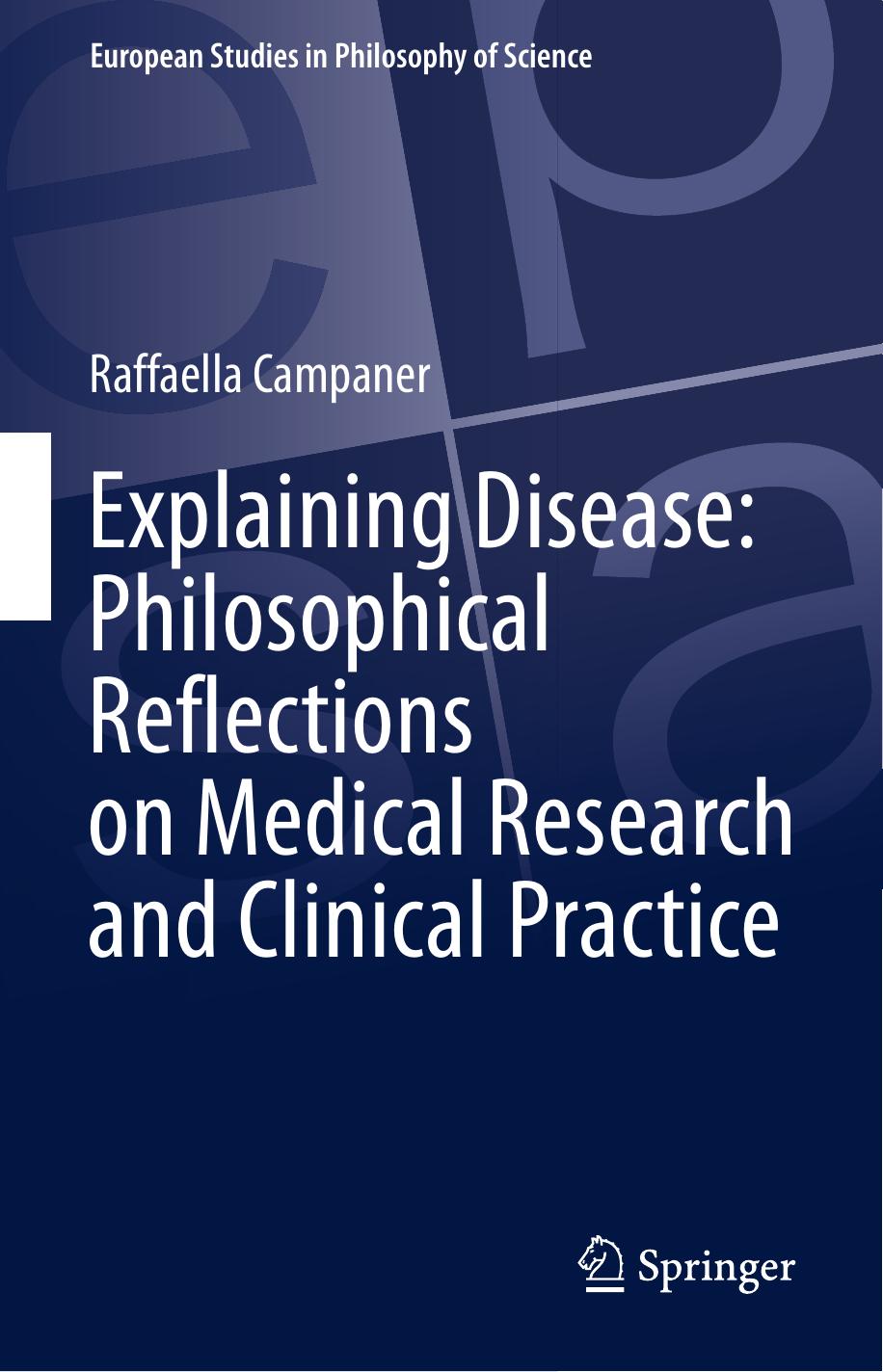Explaining Disease: Philosophical Reflections on Medical Research and Clinical Practice by Raffaella Campaner

Author:Raffaella Campaner
Language: eng
Format: epub, pdf
ISBN: 9783031058837
Publisher: Springer International Publishing
Cognitive reserve is not only a varying feature from one case to another, but it also not constantly apparent over time. It is usually a silent capacity, that then happens to be called upon when needed. Issues addressed in the literature include a number of difficulties in understanding it, including how it modulates, and how to measure and, possibly, quantify it experimentally.20 In fact, studies often rely largely on the use of proxy measures of cognitive reserve, such as, e.g., premorbid IQ, education and occupation. Confounders here are a further clear problem in the collection of significant data to understand how cognitive reserve exactly works, since, for instance, evidence on levels of education, precise roles and responsibilities in occupational contexts, life styles and rates of leisure of activity may, on the one hand, be difficult to collect uniformly, and, on the other hand, these elements may also render individuals more or less disposed to disorders for other reasons, indirectly. For instance, more often than not leisure activity is associated with rather healthy lifestyles (with respect to, e.g., eating habits), and this in turn directly affects blood pressure and cerebrovascular features â with no strict need for us to then directly appeal to cognitive reserve. This hence further hinders our understanding of whether, how and to what extent certain putative neural processes underpin cognitive reserve and contribute to remarkable variability in outcomes in brain disorders, putting some caveats also on the use of proxy measures. In general, investigations focusing explicitly and directly on phenomena labelled as âcognitive reserveâ tend to refer to both intelligence research (e.g. on the fronto-parietal network21) and to socio-economic factors. Studies on cognitive reserve suggest a neurodevelopmental perspective on psychiatric disorders, with a long term view, spanning over extended time intervals and looking both at elements in the patientâs past and at their prognostic prospects in the future. Debate is also flourishing on whether cognitive reserve tends to directly act by compensating for the underlying pathology, or, rather, by slowing down neuropathological processes â to some extent and for some time.
Some analogous considerations apply if we taken into account the notion of âpsychiatric resilienceâ, which can be defined as âa dynamic process of successful adaptation to stressful experiences or adversityâ. Measurement issues abound here as well and are pressing for a proper understanding of such adaptation processes: âwhile resilience is often operationalized as the absence of psychopathology, operationalizing resilience as a continuous outcome may better capture the wide variation in adaptation following adverse eventsâ (Lind et al., 2018, p. 34).22 What is encouraged, in other terms, is that reflections on psychiatric resilience are not performed in terms of dichotomous outcomes or values, and not just referred to the presence/absence of a disorder. Resilience is taken to reflect the variation of responses to different kinds of stressful life events, which are to be evaluated along some continuous. Studying resilient outcomes not only implies a focus on detrimental results of adverse events, but also encourages a deeper and more
Download
Explaining Disease: Philosophical Reflections on Medical Research and Clinical Practice by Raffaella Campaner.pdf
This site does not store any files on its server. We only index and link to content provided by other sites. Please contact the content providers to delete copyright contents if any and email us, we'll remove relevant links or contents immediately.
L Equipe NP by 22793(829)
Application of a Novel Technique for Clinical Evaluation of Nitric Oxide-Induced Free Radical Reactions in ICU Patients by Unknown(716)
Rosenâs Emergency Medicine Concepts and Clinical Practice by Ron Walls; Robert Hockberger; Marianne Gausche-Hill; Timothy B. Erickson; Susan R. Wilcox(589)
Oxidative damage to surfactant protein D in pulmonary diseases by Vitality Starosta1 & Matthias Griese1†(432)
Social Science Perspectives on Global Public Health by Vincent La Placa & Julia Morgan(394)
Constructing Canine Consent; Conceptualising and Adopting a Consent-focused Relationship with Dogs by ERIN JONES(362)
Organic Chemistry: An Acid - Base Approach by MICHAEL SMITH(321)
ADVANCED EMERGENCY CARE AND TRANSPORTATION OF THE SICK AND INJURED by Unknown(300)
Diagnostic and Statistical Manual of Mental Disorders, Fifth Edition, Text Revision (DSM-5-TR(tm)) by Unknown(288)
Saunders Nursing Drug Handbook 2024 - E-Book by Unknown(286)
Access to Medicines and Vaccines in the South : Coherence of Rules and Policies Applied by the European Union Commission by Stephen Kingah(282)
Davis's Comprehensive Manual of Laboratory and Diagnostic Tests with Nursing Implications by Unknown(269)
Human Microanatomy; Cell Tissue and Organ Histology with Celebrity Medical Histories by Stephen A. Stricker(267)
Socio-Life Science and the COVID-19 Outbreak : Public Health and Public Policy by Makoto Yano; Fumihiko Matsuda; Anavaj Sakuntabhai; Shigeru Hirota(265)
Irwin and Rippeâs Intensive Care Medicine by Unknown(256)
Chassin's Operative Strategy in General Surgery: An Expositive Atlas by Carol E. H. Scott-Conner Andreas M. Kaiser Ninh T. Nguyen Umut Sarpel Sonia L. Sugg(255)
Berne and Levy Physiology E-Book by Unknown(253)
Replacing the Dead by Mie Nakachi;(252)
Handbook of Skin Disease Management by Jiyad Zainab;Flohr Carsten; & Carsten Flohr(249)
